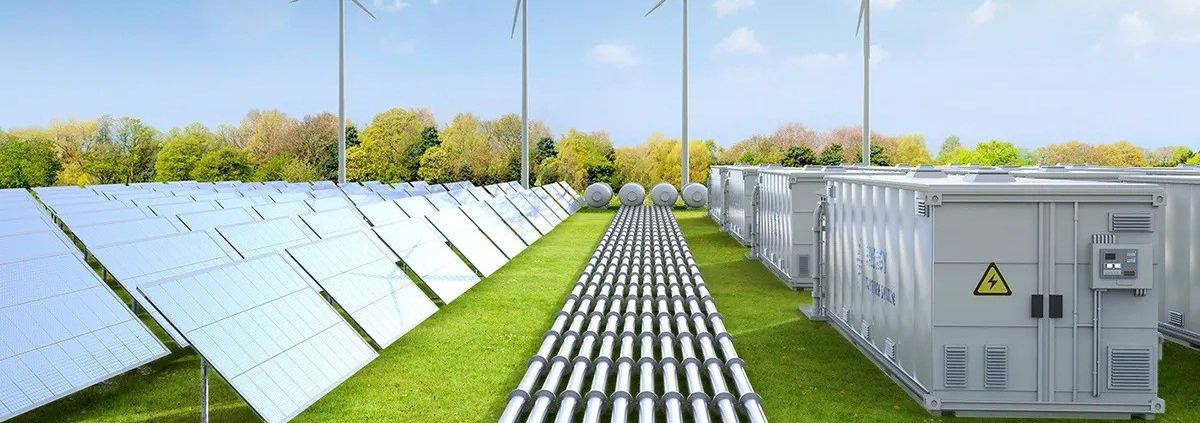Grid Energy Storage Systems: How Utilities and Developers Are Building the Future of Power
As the U.S. power grid faces growing challenges—ranging from renewable intermittency and peak demand spikes to extreme weather events and aging infrastructure—the role of grid energy storage systems is becoming increasingly central. These systems are no longer experimental technologies on the periphery; they are now core components of modern grid planning and operation.
This article explores how utility-scale energy storage is reshaping the electric grid, what technologies and architectures are leading the market, and how developers and utilities are approaching deployment at scale.
Why Grid Energy Storage Systems Matter
Traditionally, the power grid was built on one-way energy flow from generation to consumption. But with the rise of solar and wind, the need to store energy and dispatch it when required has transformed the grid into a far more dynamic system.
Grid energy storage systems enable:
- Frequency regulation and ancillary services
- Peak shaving and load balancing
- Energy arbitrage (store when cheap, discharge when expensive)
- Deferred infrastructure upgrades
- Black start capabilities and resilience support
In short, they allow grid operators to align supply with demand—regardless of when that supply is generated.
Types of Grid Energy Storage Technologies
While pumped hydro still accounts for most of the global installed storage capacity, battery energy storage systems (BESS) have become the dominant choice for new deployments in the U.S. due to scalability, siting flexibility, and fast response times.
🔋 Lithium-Ion Batteries
- Dominant in new installations (especially LFP chemistry)
- High energy and power density
- Well-suited for 1–4 hour applications
- Proven across hundreds of U.S. projects
💧 Flow Batteries (e.g., Vanadium Redox)
- Longer discharge duration (4–10+ hours)
- Separation of energy and power scaling
- Still emerging but gaining traction in long-duration projects
🌡 Thermal, Compressed Air, and Mechanical Storage
- Generally less common
- Often tied to specific geographies or use cases
Utility-Scale vs. Distributed Grid Storage
Grid storage doesn’t only come in 100+ MWh projects connected at the transmission level. It can also be:
- Behind-the-meter (BTM): Located at industrial or commercial user sites
- Distribution-connected: Strategically placed at substations or feeders
- Virtual power plants (VPPs): Aggregated storage assets acting as a coordinated fleet
Still, utility-scale grid energy storage systems—typically ranging from 10 MWh to several hundred MWh—are leading in market share and investment due to their ability to provide high-impact services at scale.
Key Considerations for Developers and Utilities
When evaluating or designing grid-scale storage systems, several practical and financial factors come into play:
- System Duration and Application
- Is it intended for 1-hour frequency response, or 6-hour peak shifting?
- Duration impacts technology choice, battery chemistry, and sizing.
- Modularity and Scalability
- Stackable or containerized systems allow flexible site deployment and capacity expansion.
- Projects often start at 50–100 MWh and scale over time based on market signals.
- Interconnection and Grid Compliance
- Storage must meet interconnection standards (IEEE 1547, FERC requirements).
- Integration with grid SCADA systems and utility EMS platforms is critical.
- Safety and Regulatory Standards
- NFPA 855, UL 9540A, and local fire marshal compliance are now baseline.
- Thermal management, cell spacing, and fault detection must be part of system design.
- Revenue Stacking and Market Participation
- Projects may generate value across multiple streams: capacity markets, ancillary services, energy arbitrage.
- System control software and forecasting accuracy are key to optimization.
System Architecture: What a Modern Grid Storage Setup Looks Like
Today’s leading configurations for grid energy storage typically include:
- High-voltage lithium iron phosphate (LFP) battery modules
- Containerized units (20-foot or 40-foot containers per ~2–3 MWh)
- Advanced Battery Management Systems (BMS)
- Fire suppression, HVAC, and insulation
- Smart EMS for dynamic dispatch and remote monitoring
These systems are designed to be plug-and-play with utility infrastructure and often support bidirectional inverters for seamless grid interaction—making them well-suited for modern grid energy storage systems operating at scale.
Real-World Deployment Trends
According to Wood Mackenzie, the U.S. installed over 4.6 GW of new grid-scale storage capacity in 2024 alone, with California, Texas, and Arizona leading the charge. Notable drivers include:
- Clean energy mandates (e.g., 100% renewable targets)
- ISO market reform allowing storage to bid into multiple markets
- Grid resiliency investment amid extreme weather and wildfire risks
These trends indicate that grid energy storage is no longer a pilot initiative—it’s a necessary grid asset.
Challenges That Still Exist
Despite the momentum, several barriers persist:
- Siting and permitting delays, especially with fire code concerns
- Interconnection queue backlogs in high-demand areas
- Supply chain and raw material pricing volatility
- Uncertainty around long-term revenue models
Smart project planning and partnerships with experienced solution providers help mitigate these risks.
Looking Ahead: The Role of Grid Storage in the Next Decade
As the U.S. moves toward deeper electrification and variable renewable energy dominance, grid energy storage will continue to evolve from a support asset into a core operational element of the power system.
Areas to watch include:
- Integration with green hydrogen and hybrid renewable-plus-storage projects
- Real-time AI-driven dispatch optimization
- Co-location with data centers and industrial hubs
- Federal support via DOE loan guarantees and ITC extensions
Final Thoughts
Grid energy storage systems represent a fundamental shift in how electricity is managed, stored, and delivered. For developers, utilities, and energy professionals, understanding the architecture, regulatory landscape, and deployment best practices is no longer optional—it’s essential.
For a closer look at how modern grid energy storage systems are configured and deployed in utility-scale applications.


